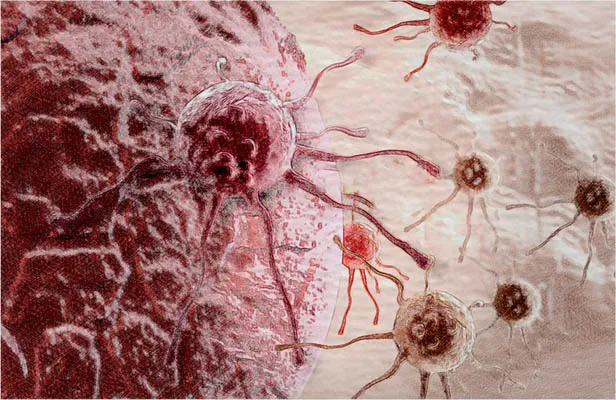
Tumors frequently make up groups of cancer cells that show differential drug level of sensitivities. This is one of the reasons that at first reliable treatments usually do not lead to a long-term advantage in clients. Scientists from the Netherlands Cancer Institute in Amsterdam, in cooperation with the global biotechnology business Genmab A/S, have now established a brand-new method to tackle this issue. They report, for the first time, an approach to target different cell groups within single tumors based on their respective characteristics. The leading scientific journal Nature Medicine will publish their findings on January 15th.
New target in resistant growths
Although much development has actually been made in the treatment of cancer, cures stay unusual, because growths establish resistance over time to the substance abuse. It is becoming increasingly more clear why this occurs, for instance in melanoma, the most aggressive form of skin cancer. Melanomas often carry a mutation in the BRAF-gene, which causes the tumor cells to proliferate. This can be treated efficiently by a customized treatment utilizing a BRAF-inhibitor. Sadly, lots of growths develop resistance to this drug, even when it is combined with a so-called MEK-inhibitor, which hits the very same signaling path.
A research group led by Prof. Daniel Peeper at the Netherlands Cancer Institute had currently formerly discovered that such resistant cancer malignancies begin producing another protein, AXL. The AXL- protein rests on the outside of the tumor cell and for that reason makes up a great target in principle for treatment. Peeper: "Therefore, we set up a cooperation with the international biotechnology business Genmab, which had established innovative medicine versus AXL." It worries a so-called antibody-drug conjugate (ADC), comprising an antibody combined to a cytotoxic molecule. This product, called HuMax-AXL-ADC, particularly binds to tumor cells revealing the AXL-protein, and can therefore kill them. The researchers demonstrated that numerous types of AXL-high tumors might effectively be eliminated in this method.

An artists impression of cancer cells
Combination treatment 2.0
Ph.D. student Julia Boshuizen from the Peeper lab found that cancer malignancies that were resistant to BRAF- and MEK-inhibitors certainly harbored a large number of AXL-high cells. However, she likewise observed that the majority of tumors still contained significant varieties of cells with little or no AXL. Because the researchers had already discovered that those cells remained sensitive to BRAF- and MEK-inhibitors, she came up with a plan. "We compared the resistant tumor with a bucket of marbles in two colors: yellow ones that have little AXL, which are sensitive to BRAF- and MEK-inhibitors; and red marbles that reveal great deals of AXL and cannot react to BRAF/MEK-treatment." She continues: "If you eliminate the yellow marbles just, the red ones remain, and vice versa. So, to get rid of both colors, we believed it may be an excellent method to integrate BRAF/MEK-inhibitors with HuMax-AXL-ADC."
You May Like: Genetically modified algae eliminates ninety percent cancer cells without any harm to others
The team managed to reveal that melanomas that were resistant to the basic treatment in mice were still extremely responsive to the new AXL-medicine. Furthermore, they discovered that BRAF/MEK-inhibitors promoted the production of AXL in tumor cells, rendering HuMax-AXL-ADC a lot more effective in a mix treatment. This rationally established combo-treatment efficiently removed both groups of tumor cells, leading to more extended actions.
The roadway to the bedside
With this research study job, the detectives have provided essential pre-clinical proof for the efficacy of the new AXL-medicine, along with for the combination with BRAF- and MEK-inhibitors for cancer malignancy clients. Genmab is presently evaluating HuMax-AXL-ADC in patients with a number of various types of growths, consisting of patients with cancer malignancy, to examine the safety, side effects and the very first indications of effectiveness.
' Cooperative targeting of melanoma heterogeneity with an AXL antibody-drug conjugate and BRAF/MEK inhibitors,' Nature Medicine 2017-01-15 online
Boshuizen et al
This research study was funded by Genmab, KWF (Dutch Cancer Society) and the European Research Council.
Source: Personalized Cancer Treatment 2.0: New Combination Strategy Developed
P.S Check out http://steemspeak.com Its the best channel for steemit I discovered on Discord! and a HUGE shoutout to @amanda46536 for helping me out. Also @tytran, @battleaxe, @kassixo, @walden and @ackza (<-- Best guy ever! @binkley from SteemThat.com and @brn123... Hope I haven't left anyone out
Comment, resteem and upvote pls and I'll follow and upvote you as well :) Science FTW!